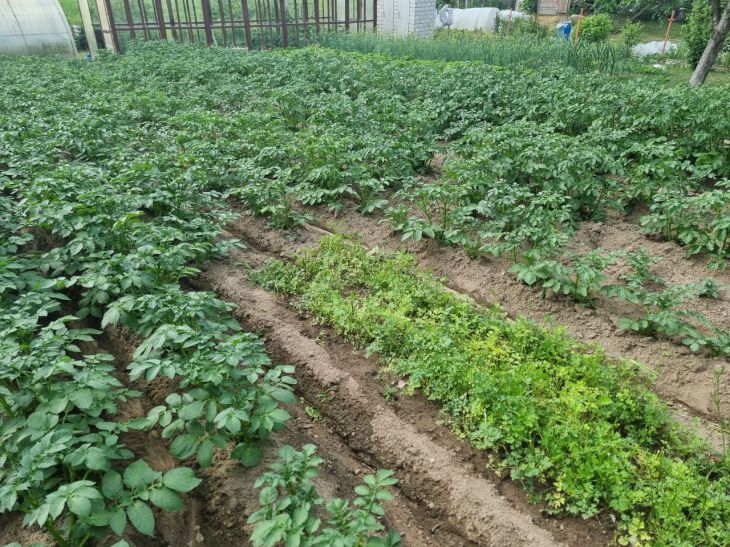Lifehack for potatoes that will increase the yield by 3 times: try it urgently
What if just one step could transform your potatoes from tiny peas into large, smooth tubers?
The secret lies in proper hilling, but not in the way you have been doing it before.
Instead of the standard method of adding soil twice a season, try the “double hilling with intermediate watering” method.
During the first hilling, when the sprouts reach 15 cm, form a high ridge (25-30 cm) and water it with a yeast solution (100 g per 10 l of water). Yeast activates the soil microflora, accelerating the decomposition of organic matter.
After two weeks, before flowering, repeat the hilling, adding crushed eggshells to the soil - it will saturate the plants with calcium and protect them from wireworms.

This approach increases the number of tubers on the bush, as the stem actively forms underground shoots. Experienced farmers confirm: if the technique is followed, the yield increases by 2-3 times, and potatoes are less susceptible to late blight. Try it on several bushes - the difference will be obvious at the end of the season.
But success also depends on the preparation of the tubers. A month before planting, place them in boxes in a cool room (12-15°C) for germination. Spray with a solution of copper sulfate (1 teaspoon per 10 liters of water) once a week - this will protect against fungi.
If the sprouts are too long (more than 5 cm), carefully break them off - this will stimulate the formation of new, stronger ones. Before planting, treat the tubers in an ash solution (2 glasses of ash per 10 liters of water) - this will speed up root formation.
After the second hilling, do not forget about fertilizing. During the flowering period, potatoes need phosphorus: scatter bone meal around the bushes (100 g per square meter) and dig into the soil.
And during the formation of tubers, feed with potassium: 1 tbsp. of potassium sulfate per 10 liters of water under each bush. If you notice curling of leaves, this is a sign of magnesium deficiency. Spray the plants with a solution of magnesium sulfate (20 g per 10 liters of water).
To protect against late blight, use whey. Dilute it with water 1:1 and spray the bushes once every 10 days. Lactic bacteria will create a protective film on the leaves.
If the disease has already appeared, remove the affected leaves and treat the plants with garlic infusion (200 g of crushed cloves per 10 l of water). After harvesting, do not leave the tops on the plot - burn them or bury them outside the garden.
And finally: potatoes like loose soil. If the soil is heavy, add sand or peat to it.
And to conserve moisture, mulch the beds with hay or mown grass. The mulch layer should be at least 10 cm. These simple steps will ensure that even in a dry summer you will reap a record harvest.
